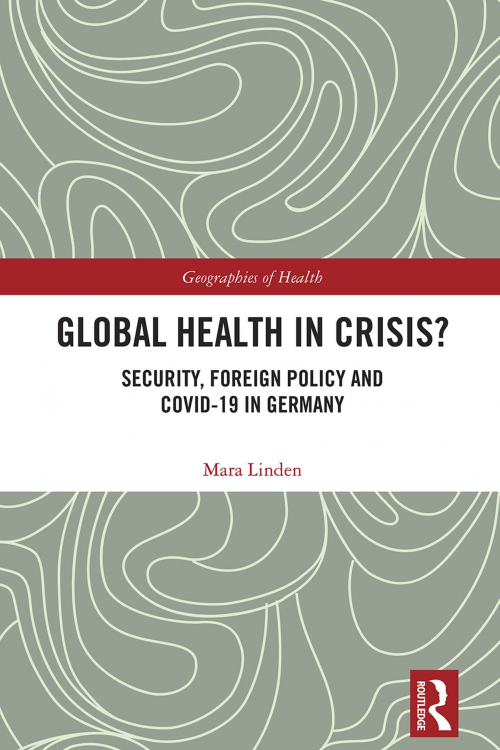Insights from Health Geographies I: How cities shape our health (Summer term 2025)
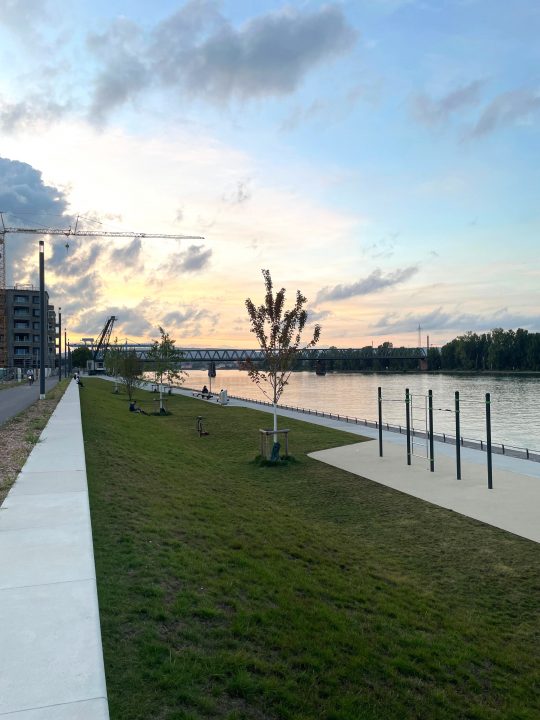
Fig. 1: Sports equipment for everyone in public space, Zollhafen Mainz
Text and photos by Johanna Möller
This project examines the complex relationship between cities and health. Using Mainz and other cities as examples, it shows how public spaces can both hinder and promote well-being – on the one hand through noise, crowding, and air pollution, and on the other through green spaces, sports facilities, and riverside promenades. The report is based on personal observations and narrative elements and is complemented by expressive photographs that highlight how urban design shapes everyday life. In this way, larger questions of social justice also become apparent: Who actually benefits from healthier cities – and who remains excluded?
Introduction: Mara Linden
In summer term 2025, students enrolled in the MA programme Human Geography: Globalisation, Media, and Culture (MA) participated in the seminar Current Debates on Globalisation, Media & Culture: Geographies of Health, led by me (Mara Linden).
Throughout the seminar, we worked with different geographical perspectives within the field of health geographies, focusing on inequalities and power imbalances around issues concerning health in local and global contexts. We covered topics such as (post)colonial global health, health and environment, One Health and more-than-human health, before our focus moved to bodies, reproductive health, clinical labour and organ markets. From there, we continued to discuss the economisation of health and the focus on security and preparedness in much of global health. The following blog post is one of several in a series of what we call “insights” from health geographies. These blog posts are the students’ works: They creatively engaged with the themes and perspectives taken up in the seminar and used their own empirical data – from interviews and observations to visual material – to write essays, create websites or produce films or podcasts. Through these works, the students expanded the seminar discussions, reflecting and adding to what health geography means. By making these works available online, we hope to open further discussions on health geographies’ entanglements with everyday experiences, social inequalities, and urban life.
Narrative Report: How cities shape our health
by Johanna Möller
I breathe in and out, steady and regular, in rhythm with my music. The music I often listen to on my headphones when I go jogging. I pass people walking along the Rhine promenade. Cyclists pass me as I let my gaze wander to the other side of the river. Over there, in Mainz-Kastel, at Calisthenics Park on Kransand, I’ll take a short break from running on my way back and do a few exercises on the sports equipment. I’m sure it’s busy there today. When the weather is good, you always meet lots of people doing workouts on the square, children running around, and skaters practicing their tricks. There are also always lots of people sitting on the lawn and the steps leading down to the riverbank, enjoying the last sunshine of the day on their faces (see Figure 2).

I consider for a moment whether I should take the direct route across the Theodor-Heuss-Bridge to Calisthenics Park. Unfortunately, there is no publicly accessible sports equipment on the Mainz side of the Rhine along my running route.
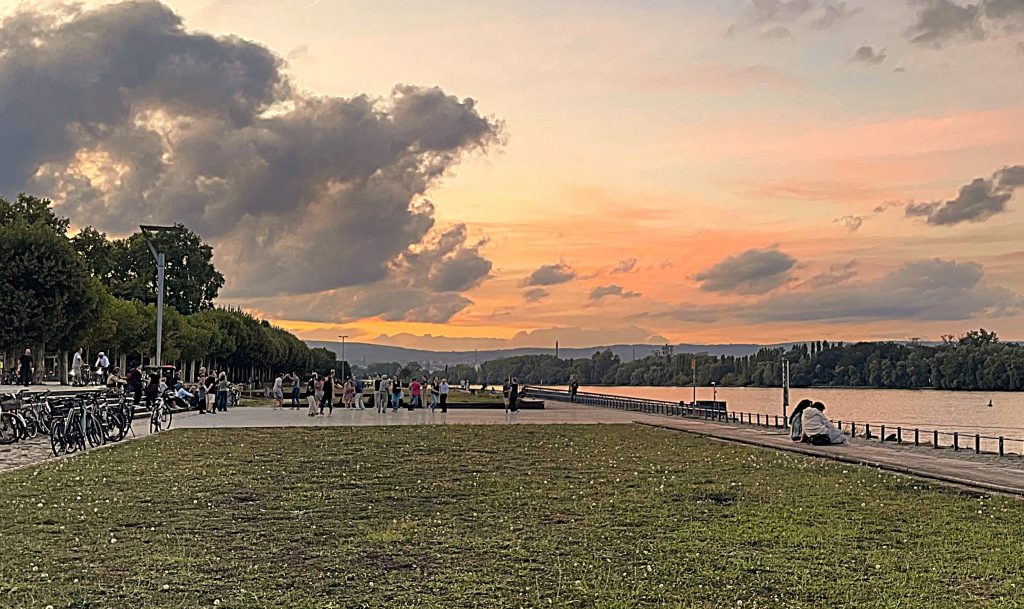
However, I decide to run my two-bridge loop and stop in Mainz-Kastel on the way back. Now I’m already past the ‘Schloßtor’ and running past the dance group that gathers here some evenings to dance salsa, while people settle down on the steps and small patches of grass on the riverbank, enjoying the evening on the Rhine with a drink, music, nice conversations, or reading a book (see Figure 3).
Soon I’m at the ‘Zollhafentreppe’ and mingle with the people who are walking or jogging in the slightly more exclusive Zollhafen district. Since I moved to Mainz a year ago, I’ve been able to observe the development of the district. Many buildings were already standing at that time, but construction is still ongoing. Large billboards show what it will look like someday. New buildings with generous balconies and green courtyards dominate the scene, and the waterfront promenade looks like something out of a brochure. It is subtly apparent that a lot of money is being invested here – not for everyone, but for those who can afford to live right by the water.
Everywhere you look, you can see that the quarter is still under development and more buildings will be added. The waterfront promenade is also still under construction. Just last week, the path I am walking on was closed due to construction work. Now I notice that the path to the water is finally open. I follow the newly designed path, which leads down a ramp and stairs to the shore, and find myself next to new sports equipment (see figure 2). These are lined up along the edge of the path and are accessible to everyone. It is similar to the equipment on the other side of the river in Mainz-Kastel. Equipment that anyone can try out spontaneously – whether you are actively exercising or just playing, stretching, or trying out how you can move. There are bars you can pull yourself up on or hang from, simple beams for balancing, open spaces, and other equipment where you can test your strength or coordination. Everything is open to the public, invitingly arranged, and designed so that you can meet other people while you train or chat briefly.
I am excited about this new development. Finally, there is freely accessible sports equipment on the Mainz side of the river, and from now on I won’t always have to walk to Wiesbaden when I want to do some exercise. It is already obvious that the new facility is being gratefully accepted. Lots of people are using the equipment to exercise (see figure 4). I also turn my music down for a moment and try out some of the equipment. Then I turn my music back up and continue running towards the ‘Nordbrücke’. My breathing adjusts to the rhythm of my music again.

I’ve been jogging ever since I started living in cities. I grew up in the countryside, where I never jogged as often as I do in the city. It only became a routine when I moved to different cities for my studies, internships, and first jobs. It always gives me the opportunity to discover new cities and places and feel at home in unfamiliar surroundings. Running and cycling are activities that I can do independently of associations or clubs and established structures.
Especially in an urban environment, which is often dense, bustling, and sometimes a little hectic, these activities give me the opportunity to relieve stress. Perhaps that is why jogging only became a regular part of my routine when I started living in the city. Particularly because city life – despite all its advantages – also comes with a number of additional stress factors. The longer I live in cities, the more clearly I feel these factors. Compared to rural life, the air is not as clean, space is limited, and green spaces and forests are often not right on your doorstep or in the immediate surroundings. Apparently, I’m not the only one who feels this way. You see lots of people running, cycling, or working out on the equipment along the riverbanks. There is clearly a demand for this – and the facilities are well used. When jogging or cycling in the city, I often realize how closely movement and the urban setting are linked. Often, the same questions keep coming to my mind: How much does our well-being actually depend on how a city is built? Is the city a source of stress – or a place for relaxation? Can the city help us stay healthy – or does it make us sick?
Cities offer their residents numerous advantages, including better educational opportunities, more accessible healthcare, diverse job and career opportunities, and a rich cultural life (Adli and Schöndorf, 2020, p. 979). Despite all the benefits and vibrancy that cities offer, they are also challenging environments for our health (see figure 5).
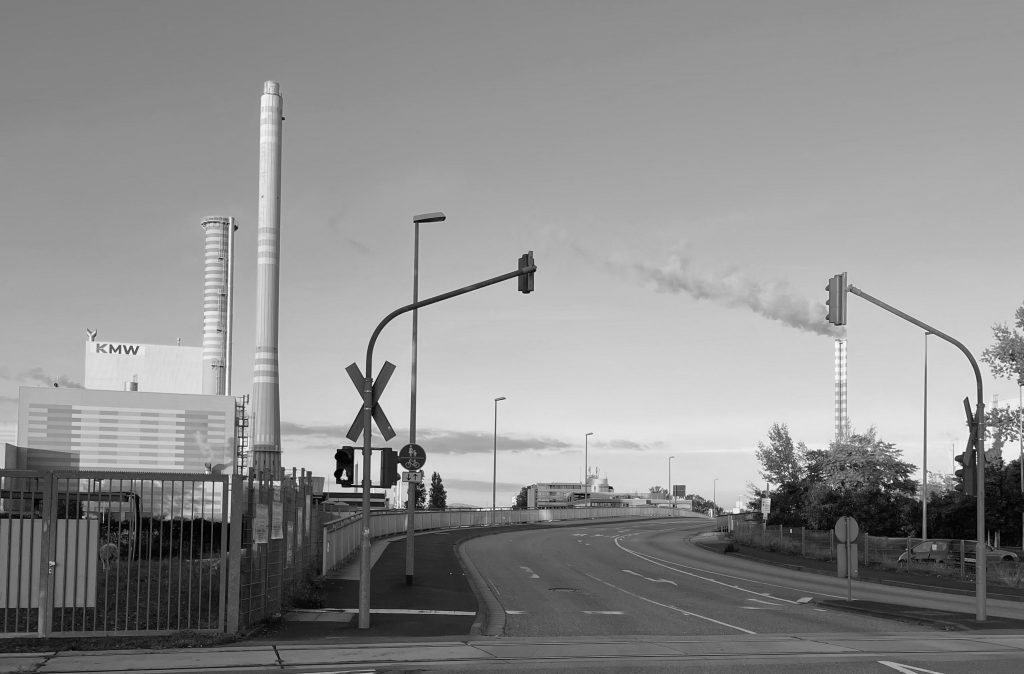
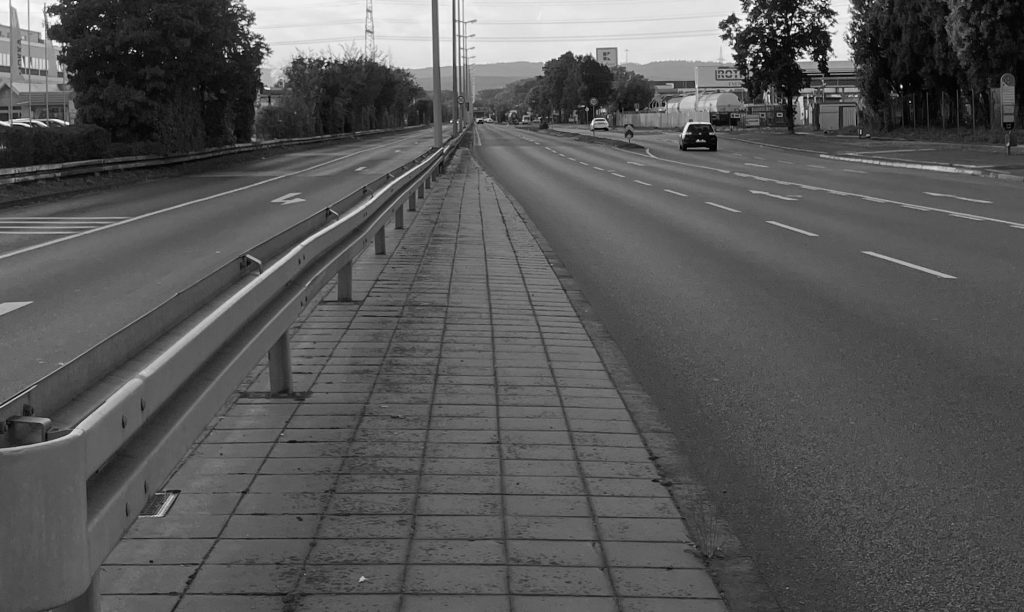
Studies have shown for years that city dwellers have a higher risk of mental illness: depression, anxiety disorders, and even schizophrenia are more common in cities. Noise, cramped conditions, a lack of green spaces, and constant densification increase stress – a phenomenon that researchers refer to as ‘density stress’, which describes the paradox of isolation despite proximity (Adli and Schöndorf, 2020, pp. 979-985; BSBK, 2020, pp. 31-34). Climate change is also clearly noticeable in cities: due to the high degree of surface sealing cities heat up more than their surrounding areas – especially in densely built-up neighborhoods with little green space. Added to this are factors such as traffic and light pollution, which put strain on both the body and the psyche (BSBK, 2020, pp. 34-36). Lack of physical activity is another issue: especially where there is a lack of open space, opportunities for sufficient movement in everyday life are reduced (BSBK, 2020, pp. 36-38).
These issues are no longer just the subject of scientific debate. They have also found their way into the public awareness: Various podcasts – such as IQ-Science and Research with ‘Cramped City Life – Everyday Life and Health’ (2023, own translation) or Bas Kast and Prof. Dr. Mazda Adli’s podcast episode ‘How (Un)healthy is City Life’ (2023, own translation) – and other media reports now address how unhealthy city life can be (see Spotify-Codes). At the same time, many are searching for a healthy balance – a shift is noticeable away from the pressures of urban stressors toward everyday access to nature, opportunities for physical activity, or even relocation to the countryside (Eichenauer et al., 2023, p. 15). This trend has become significantly more apparent during the coronavirus pandemic (Eichenauer et al., 2023, p. 4).
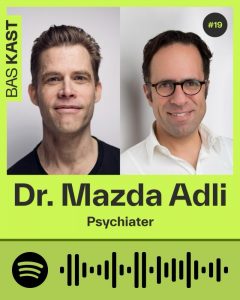

The fact that cities are places that can have a negative impact on our health is not a new phenomenon. As early as the 19th century, with the beginning of industrialization, when huge numbers of people moved from the countryside to the growing metropolises in a very short time, the dark side of urbanization became apparent. Narrow streets, overcrowded residential areas, and poor hygienic conditions made life dangerous for many people in cities at that time. The life expectancy of workers at that time was often no more than thirty years. Tuberculosis, cholera, and typhoid fever spread rapidly in the densely populated neighborhoods. Working-class neighborhoods were particularly affected, where people lived in tenements or damp basement apartments – crammed together, with little light and hardly any access to clean water (Rüthers, 2018; Rafael, 2023, p. 31). Literary pieces from this time and movies set during industrialization and the years after show how tough life was in these neighborhoods. Gerhart Hauptmann’s ‘Die Weber’ and Victor Hugo’s ‘Les Misérables’ give a sense of how closely city life, poverty and disease were tied together. Meanwhile, the wealthier middle classes lived in generous apartments or villas in greener suburbs. Series such as ‘Babylon Berlin’, which are although set later, atmospherically capture these contrasts between glittering boulevards and dirty back alleys. This clearly shows that even back then, significant differences were emerging between healthy and unhealthy neighborhoods – a pattern that could be observed in many European cities.
In response to the dramatic public health conditions, the first large-scale urban redevelopment measures were initiated in the mid-19th century. One of the most famous and, at the time, one of the first urban redevelopment projects was that of Paris during the reign of Napoleon III. This took place from 1853 onwards under the direction of Georges-Eugène Haussmann. This redevelopment is therefore also known as ‘Haussmannisation’ and for the very comprehensive and radical urban planning measures that were carried out. Put simply, Paris was simply torn down and rebuilt, albeit in a planned manner. By 1870, wide boulevards had replaced narrow alleys, a sewerage system that was modern for its time had been installed, and new squares and parks had been created. All this was intended to prevent the spread of disease and make the city more livable (Schott, 2014, pp. 253-270). And indeed, hygienic conditions improved noticeably. At the same time, the redevelopment brought new problems: many residents of the old neighborhoods were displaced and forced to find new homes in the less developed outskirts. As much as Haussmannization was praised as a public health measure, it is also criticized as an early precursor to gentrification (Paccoud, 2023, pp. 266-280).
This historical review shows that, back then as today, cities remain places with particular health risks. Even though medical advances, better hygiene, and technical infrastructure have fundamentally changed the nature of disease since the 19th century, air pollution, heat, noise, and lack of movement continue to be health risks that city dwellers in particular are exposed to. Today, as cities continue to grow, the role they play in people’s well-being is becoming even more important. Health has always been and remains a crucial issue in urban planning – and at the same time a driver of change.
Once again, I breathe in and out regularly. Evenly, step by step. I move to the beat of my music. ‘… Guten Morgen Berlin, du kannst so hässlich sein, so dreckig und grau … Du kannst so schön schrecklich sein, Deine Nächte fressen mich auf … ‘ (2009) sings Peter Fox in my ears. In a way, his lyrics also fit my thoughts: the ambivalence of the city, between burden and optimism, between stress and movement.I continue walking along the waterfront of the Zollhafen. I pass newly created green spaces and sports equipment, where people spend the evening with friends or do sports. The design of the Rhine waterfront is definitely one reason why I feel at home in Mainz. Here, and also on the other side of the Rhine in Wiesbaden, you can relax, walk, or do sports right by the water. It reminds me of Kassel, where I lived for several years. There, you could not only walk along the Fulda, but also swim directly in the river. I know that this is not a given. In Stuttgart, where I lived for a while, the Neckar is present, but access to it is not nearly as open. The situation is completely different in Bern, where I lived last year. There, I had the feeling that the whole city was on the move. People ride their bikes everywhere, jog through forests close to the city such as the Bremgartenwald or the Könizbergwald, train in parks in the city, or swim in the Aare as a natural part of life – a river that winds its way through Bern with its almost unreal blue color and fast current (see figure 6).
The locals jump in at every opportunity. It almost seems as if everyone carries the well-known Aare bag with them everywhere they go. This bag keeps all your belongings waterproof while you swim, and you can simply carry it on your back into the water so you don’t have to walk back when you get out – the current of the Aare is so strong that you always end up quite a bit further downstream when you get out of the water. In summer, pop-up bars open on the riverbank, and meeting places seem to spring up almost by themselves. Throughout the city, there are small attractions that encourage an active lifestyle: simple obstacle courses made of wooden tree trunks in the forest with simple signs indicating possible exercises (see figure 7), meeting places by the river, freely accessible sports fields, and swimming pools in the middle of the neighborhood. They are not large or spectacular, but they are enough to encourage many people to go outside.
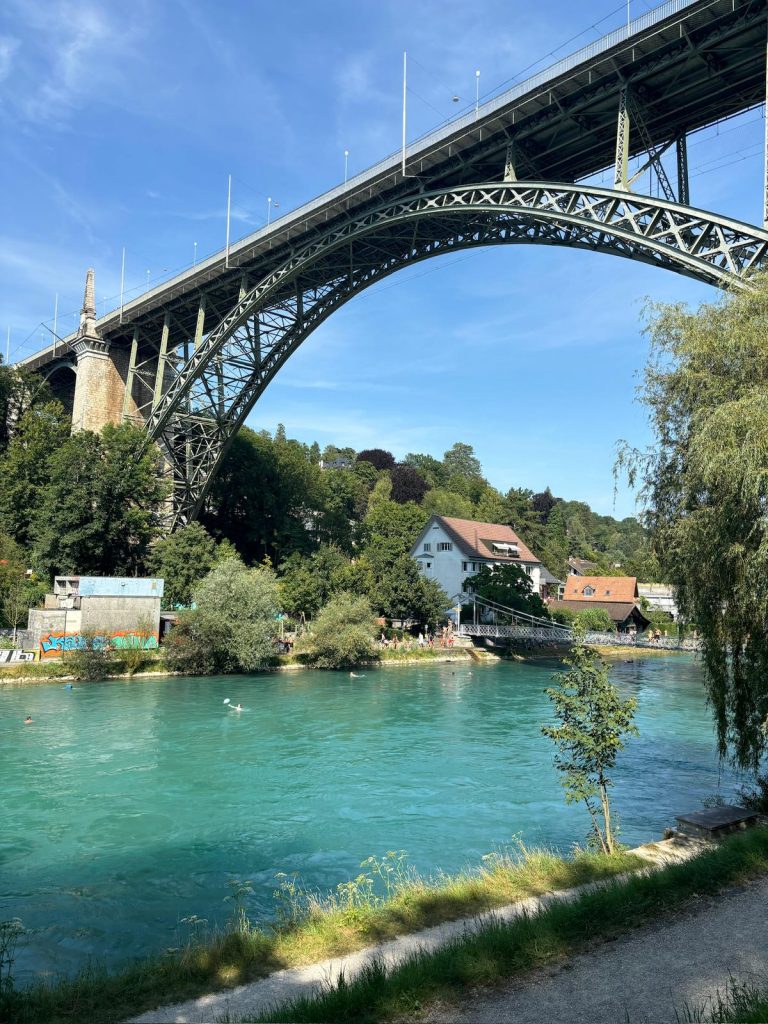

All of this shows me again and again that the design of public spaces makes the difference. Where there are bike paths, freely accessible green spaces, and sports equipment, the way people use the city changes. Physical activity becomes part of everyday life, social encounters arise, and isolation breaks down.
As I continue walking and lose myself in memories of my time in Bern, Peter Fox sings ‘… Ich bin kaputt und reib mir aus, Meinen Augen deinen Staub, Du bist nicht schön und das weißt du auch, Dein Panorama versaut, Siehst nicht mal schön von weitem aus, Doch die Sonne geht grade auf, Und ich weiß, ob ich will oder nicht, Dass ich dich zum Atmen brauch …‘ ( 2009)
From what I know, many people appreciate this very ambivalence in cities, which is described in the song ‘Schwarz zu Blau’: the dust and harshness, but also the vibrancy and charm of urban life. But how does this fit together – especially with the desire to live a healthy life in the city? My own experiences in various cities such as Kassel, Stuttgart, Bern, and Mainz show how crucial the design of public spaces is in this context. And my observations reflect a growing discourse: cities are no longer seen merely as places to live and work, but increasingly as spaces that should and must actively promote health. This is made clear, for instance, by a clearly formulated core message from the 2020/21 ‘Baukulturbericht: Public Spaces’, which states:
‘[Expand public spaces for health and recreation! Public spaces have a decisive impact on climate protection and climate change adaptation. They are important for health and recreation. Building culture must increasingly address and strengthen urban greenery, surface water, and biodiversity.]’ (BSBK, 2020, p. 2, my translation)
There is widespread consensus behind such recommendations: cities expose us to noise, air pollution, heat, and light emissions – factors that have been proven to be associated with a higher risk of health problems and even illness. At the same time, specifically designed spaces, such as green spaces, can have exactly the opposite effect. They reduce stress, promote physical activity, and improve mental health (Neugebauer and Niederberger, 2024, pp. 436-440). Cities are no longer just about concrete and traffic, but are increasingly developing concepts that focus on health and quality of life. Ideas such as the ‘sponge city’ rely on less sealing, more vegetation, and cooling water areas to counteract heat waves in densely built-up neighborhoods. Green and open spaces as well as bodies of water are increasingly understood as ‘infrastructure’ – just as important as roads or power grids, because they not only ensure biodiversity, but also store water, filter fine dust, regulate temperatures, and provide healthy spaces for recreation and exercise (BSBK, 2024, p. 68).
Promoting physical activity is also a key aspect of healthy cities. Studies show that around 80 percent of the population does not get enough physical activity (BSBK, 2020, p. 37). There is a growing trend toward self-organized sports: jogging, cycling, fitness in the park. Cities need freely accessible areas close to residential areas for this purpose. Better conditions for non-motorized transport – such as improved bike paths and safe crosswalks – can also change habits and promote a more active and healthy everyday life (BSBK, 2020, pp. 36-38).
Research also shows how current this topic is: with the ‘Charter of Neurourbanistics’, for example, a young field of research is investigating how urban planning can help reduce stress and strengthen resilience (Adli et al., 2017). All of this illustrates that cities today are actively being considered and tested as health spaces – with the aim of making them healthier living environments for more and more people.
But as convincing as these developments are, they also raise a question: Who actually benefits from the new parks, promenades, and sports facilities? History has already shown – for example, in the Haussmannization of Paris – that improvements in urban design were often unevenly distributed. And even today, it can be observed that healthy urban spaces are not being created everywhere to the same extent. Those who live in a green, affluent neighborhood have parks, sports facilities, and good air quality on their doorstep, almost as a matter of course. In other parts of the city, on the other hand, traffic noise, dense development, and a lack of green spaces characterize everyday life. This clearly shows that health is also a question of space and social justice.
Research on urban health clearly shows that the burden is unevenly distributed. Vulnerable groups – migrants, people living alone, older people, and economically disadvantaged groups – often have less access to the kinds of environmental and social resources that foster well-being and help people stay healthy. The Marmot Review – officially titled Fair Society, Healthy Lives – was a milestone study in England, published in 2010 under the direction of Michael Marmot (Marmot, 2010). It was the first to clearly define that health inequalities are not primarily a matter of medical care, but are deeply rooted in social and spatial conditions: education, income, housing, access to green spaces, good working conditions, and safe living environments. Health is thus seen as a reflection of social justice. In a follow-up to this report ten years later, it became clear that these social differences in health have not disappeared – in many places, they have even become more pronounced. The study thus made it clear how necessary further political and social efforts are (Marmot, 2020).
At the same time, international organizations such as the WHO and other studies have taken up and further developed the idea of social and spatial determinants of health. One example is the ‘WHO European Review of Social Determinants of Health and the Health Divide’, which links health opportunities within Europe to factors such as working conditions, living environment, social security, and environmental pollution. This research emphasizes that political and planning decisions at all levels – local, regional, national – are crucial to the conditions under which people live, move, and stay healthy (Marmot et al., 2012).
These connections become particularly clear when cities try to promote the health of their residents through actual measures. But even seemingly simple improvements for better health in cities – often described as win-win situations – can paradoxically increase social inequalities. New parks, green waterfront promenades, or climate-resilient open spaces promote recreation, lower temperatures, improve air quality, and strengthen social life. But researchers such as Isabelle Anguelovski warn of the consequences of so-called ‘green climate gentrification’:
‘[…] new green spaces contribute to increased property values, economic growth, and business investment while offering recreational access […] and overall improved health. […] In today’s cities, however, low-income communities, people of color, and migrant communities face well documented forms of climate injustice. We argue here that an emerging fifth type of climate injustice arises because these populations are among the social groups most likely to experience residential and social displacement – in the short and mid-term – from green climate infrastructure and its associated gentrification risks’ (Anguelovski et al., 2019, p. 26139)
Put simply, this means that the very population groups that are most affected by health hazards – such as environmental burdens – benefit least from projects that are actually intended to promote resilience and health. Rising rents and gentrification are driving them out of neighborhoods that are being redeveloped.
This is where the human geography dimension of urban health is particularly evident: it is not just a question of whether parks or sports facilities are built, but also of how people can make use of these facilities. Differences in access often arise due to residential location, time resources, or social conditions. Often, not everyone benefits equally.
I complete the last few meters of my run. As every Friday, the Mainz outdoor sports group ‘Draußensport’ has gathered in front of the building where I live. They call their training ‘stair sports’ – once a week, a large staircase in Walpodenstraße, leading up to the ‘Oberstadt’, becomes an improvised gym (see figure 8). Some are already running up and down, others are greeting newcomers, laughing, talking. I pause for a moment and watch. I recognize some faces, others are new. It’s an open group: anyone can join, regardless of age, fitness level, or prior experience. For many who have just moved to Mainz, the group becomes an anchor point – friendships are formed, routines are established, and a community grows. And all this on a staircase that was never originally intended as a sports area.

In moments like these, I realize that it doesn’t always take new equipment or large investments. Sometimes it’s enough to make existing places easily usable so that people can adopt them for themselves – a square, a meadow, a staircase. When the conditions are right, they can become spaces that promote health, exercise, and social interaction.
As my breathing calms down and I stretch my legs, my initial questions return. How much does the city influence our well-being – do the stresses of city life always make us ill, or can we also keep ourselves healthy? My response is now more differentiated: it is both. Cities can make us ill, but they can also keep us healthy. This depends not only on us as individuals, but also on the city itself – on what it enables or denies us.
But the answer is not that simple. Health in cities is never evenly distributed. It also depends on where we can afford to live, whether we have access to green spaces, whether the air is clean, and whether medical care remains accessible. Research such as the Marmot Review has shown that health is a reflection of social justice. Those with lower incomes, poorer education, or smaller social networks often live in more polluted neighborhoods – with more noise, less green space, and poorer air quality. Even if new spaces for physical activity are created, the question remains: Who benefits from them? And who is excluded or even displaced?
I realize that my view focuses primarily on public spaces—because that’s where I go jogging and because these spaces are particularly relevant to everyones everyday life and health. For other people who play sports in clubs, go to gyms, or pursue completely different forms of health, the picture may be different. And yet public space affects us all. What I am describing is still only one perspective—a personal, subjective one that develops while running through the city.
And my view is, of course, also strongly influenced by my European perspective. In cities in the Global South, the challenges are even more pressing: urbanization often progresses faster than infrastructure can be created. Millions of people move to cities in a short period of time – with enormous consequences for housing, water, waste disposal, and health care. Health inequalities are often even more visible there because resources are scarcer and climatic stresses such as heat, flooding, or air pollution have a more immediate impact (Randolph and Storper, 2023).
While the sports group next to me laughs as they start the next round on the stairs, I let my pulse slowly return to normal. The questions remain, but my answer has become clearer: the city is both a risk and an opportunity. The crucial factor is whether it offers us spaces where health is not a privilege but part of everyone’s everyday life.
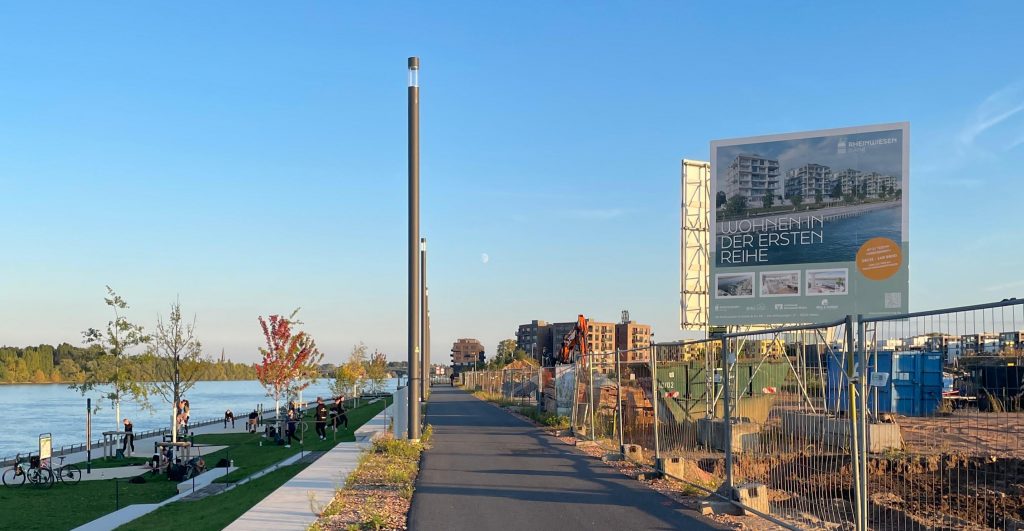
Bibliography
Adli, M. et al. (2017) ‘Neurourbanism: towards a new discipline’, The Lancet Psychiatry, 4(3), pp. 183–185. Available at: https://doi.org/10.1016/S2215-0366(16)30371-6.
Adli, M. and Schöndorf, J. (2020) ‘Macht uns die Stadt krank? Wirkung von Stadtstress auf Emotionen, Verhalten und psychische Gesundheit’, Bundesgesundheitsblatt – Gesundheitsforschung – Gesundheitsschutz, 63(8), pp. 979–986. Available at: https://doi.org/10.1007/s00103-020-03185-w.
Anguelovski, I. et al. (2019) ‘Why green “climate gentrification” threatens poor and vulnerable populations’, Proceedings of the National Academy of Sciences, 116(52), pp. 26139–26143. Available at: https://doi.org/10.1073/pnas.1920490117.
BSBK (2020) Öffentliche Räume. 2. Auflage. Berlin: Bundesstiftung Baukultur (Baukultur Bericht / Hrsg.: Bundesstiftung Baukultur, 2020/2021).
BSBK (2024) Baukultur Bericht 2024/25: Infrastrukturen. 1. Auflage. Berlin: Bundesstifung Baukultur (Baukulturbericht, 2024/25).
Eichenauer, E. et al. (2023) Neu im Dorf: Wie der Zuzug das Leben auf dem Land verändert. Originalausgabe. Berlin: Berlin-Institut für Bevölkerung und Entwicklung.
Marmot, M. et al. (2012) ‘WHO European review of social determinants of health and the health divide’, The Lancet, 380(9846), pp. 1011–1029. Available at: https://doi.org/10.1016/S0140-6736(12)61228-8.
Marmot, M. (2020) ‘Health equity in England: the Marmot review 10 years on’, BMJ, p. m693. Available at: https://doi.org/10.1136/bmj.m693.
Marmot, M.G. (2010) Fair society, healthy lives: the Marmot review ; strategic review of health inequalities in England post-2010. London: Marmot Review.
Neugebauer, P. and Niederberger, M. (2024) ‘Die Bedeutung von Stadtnatur für die Gesundheit: Ergebnisse eines Scoping Reviews’, Prävention und Gesundheitsförderung, 19(3), pp. 435–441. Available at: https://doi.org/10.1007/s11553-023-01068-x.
Paccoud, A. (2023) ‘Haussmann and the Rebuilding of Paris, 1853–1870: A Reassessment’, in A. Mayne (ed.) The Oxford Handbook of the Modern Slum. 1st edn. Oxford University Press, pp. 266–280. Available at: https://doi.org/10.1093/oxfordhb/9780190879457.013.16.
Rafael, V. (2023) Geography of Urban Health. Barcelona: Centre for international affairs (CIDOB).
Randolph, G.F. and Storper, M. (2023) ‘Is urbanisation in the Global South fundamentally different? Comparative global urban analysis for the 21st century’, Urban Studies, 60(1), pp. 3–25. Available at: https://doi.org/10.1177/00420980211067926.
Rüthers, M. (2018) Städte im Wandel. Bundeszentrale für politsche Bildung (bpb). Available at: https://www.bpb.de/themen/stadt-land/stadt-und-gesellschaft/216894/staedte-im-wandel.
Schott, D. (2014) Europäische Urbanisierung (1000 – 2000): eine umwelthistorische Einführung. Köln: Böhlau (UTB, 4025).

